Marom F.G.P. ltd filed an industrial design application in Israel for a pouch of the type typically referred to as the bumbag or fanny pack.
 The product was photographed from all angles and is shown here.
The product was photographed from all angles and is shown here.
The Examiner rejected the application claiming that it was not new and did not have a distinctive feature as required by Section 3 of the Israel Design Law 2017.
The prior art cited included a product advertised on Ali Express and one advertised on Facebook.
The Applicant responded that the Internet publications were not clearly dated and so were not to be considered as Internet publications viewable in Israel as per Commissioner Circular MN 69 from 2008.
The Applicant went on to note that there were many differences between the cited products and the applied for design, including the connection of the strap to the pouch, the ring, the zip fastener type and a rear compartment and its position, the size of the teeth of the zip fastener and the Zip pulls, the ability to attach the pouch with other connectors such as straps, and whether sold with a strap or not, the seams and their style and the spacing above the seam. The differences were tabulated, comparing the requested design against that advertized on Ali Express, and against the design from Facebook.
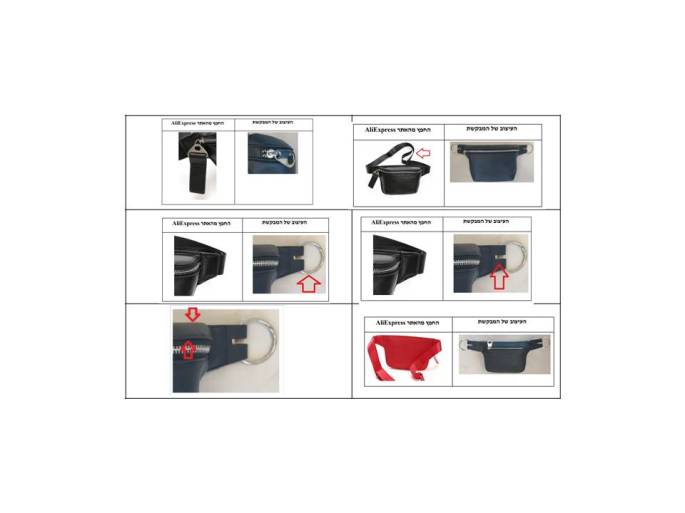
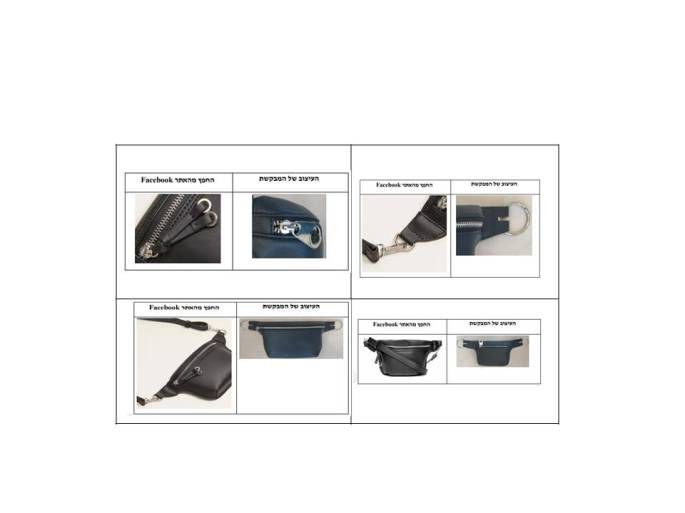
The Examiner rejected the Applicant’s claims and noted that the products shown in Ali Express could be dated by response posts and that the date of the Facebook posting is objectively set by Facebook and is not under the control of the person making the post. In support of his position, the Examiner supported his position with a 2016 decision by former Commissioner Asa Kling concerning shoe designs filed by Naalei Nayot (1974) ltd.
The Examiner considered that the differences were minor and that the general appearance of the applied for product design was similar to those cited against it.
In a hearing before the Commissioner, the Applicant argued that bumbag designs are a crowded field, and so more weight should be given to the minor differences. In this regard, the fact that the Examiner could find so many black bumbags supports providing protection for those having minor design features. Furthermore, in the fashion industry it is the minor differences that are all-important, and one should consider the ‘informed user’ and not the ‘normal consumer’. The Applicant argued that the ‘informed user would be aware of and influenced by the little details.
The Applicant considered that the large rings for attaching a strap and the slot were all important in the fashion industry. He also argued that Ali Express and Facebook were subject to manipulation of responses and that products were not shown in high quality images from all angles.
Status of Internet Publications
The Commissioner rejected claims that images on Ali Express and Facebook could not be considered prior art, and noted that the Guidelines for Examiners from March 2019 specifically allowed citation of such images based on the Nayot ruling.
Design Law – Novelty and Distinctiveness
The Commissioner noted that whereas the old Design Ordinance required novelty or distinctiveness, Section 3 of the Design Law 2017 requires both.
Russell-Clarke and Howe On Industrial designs, 9th Ed. (2016) argue that the combination (as required in Europe) raises the bar above the requirement for novelty alone.
Section 6 of the Israel Design Law defines novelty:
A design will be considered new if an identical or similar product, differing only in irrelevant details, was not publically exhibited in Israel or abroad before the relevant date,
Originality is considered by reference to a single document or design and not by considering documents showing different elements; Hasselblatt Community Design Regulation (EC) No 6/2002 (2015) p. 102.
The requirement for Novelty under the design law, is similar to that under the Patent Law in that it is an objective test, and looks at whether the applied for design is identical to an earlier published design, or differs therefrom in minor details only, where labels and the like are not considered part of the design, see EUROPEAN UNION DESIGN LAW, A Practitioners Guide, 1st Ed., 2012, Paragraphs 10.10-10.29.
Similar to Section 4 of the Israel design, and the inspiration thereof, is DIRECTIVE 98/71/EC OF THE EUROPEAN PARLIAMENT AND OF THE COUNCIL of 13 October 1998 on the legal protection of designs, which does not specify the ‘informed’ or the normal consumer:
“A design shall be considered new if no identical design has been made available to the public before the date of filing of the application for registration or, if priority is claimed, the date of priority. Designs shall be deemed to be identical if their features differ only in immaterial details.”
The ‘immaterial details’ should be interpreted narrowly so that novelty remains a technical requirement. In general, the outline, colour, shape, decoration, texture and material used are not considered irrelevant (Hasselblatt page 77).
The European Design law does relate to the informed user. However the Israel Commissioner disagrees as there is nothing in the wording of the law to support this distinction, and considers that novelty should be a simple test that is as objective as possible.
The basic assumption is that novelty should be considered before considering the distinctiveness which does require consideration of the informed user, and is more complicated.
The Distinctiveness Requirement
The distinctiveness requirement is defined in Section 7(a) of the Law:
A design will be considered as distinctive if the general impression that it gives to a informed user is different to that provided by a different design that was previously published, and in this regard, designs for all types of products may be considered.
The distinctiveness considers the general impression and not the differences. See Russel-Clarke page 43 2-048:
“The requirement of “individual character” focuses more on overall impression rather than on details. Thus, detailed differences will not be enough to give validity to a new design if it produces the same overall impression as an earlier design.”
The informed user is defined in Section 1 as follows:
The informed user is a person who is interested in the design, wanting to use it, and is familiar with the range of competing designs for the same type of product.
The explanations accompanying the draft (2015) of the new law page 703 states::
The test of the distinctiveness of a design is a necessary condition for its eligibility to be registered or to be protected as a non-registered design, and is based on the informed user. The rights relating to both registered and non-registered designs are partially based on this test. The informed user is someone who is interested in a design and in competing products for his own use or to purchase, but he is no expert, he is not a technician or an industrial designer., but is not indifferent to the product or ignorant of it. Someone off the street that has no interest is not an’ informed user’… this is an objective test, that relates to the general impression that a product makes on a person that satisfies these conditions.
The UK Court of Appeals explained this in more detail in Samsung vs. Apple [2012] EWCA Civ 1339:
The notional character whose attributes the court has to adopt is the “informed user.” The Judge dealt with these attributes:
[33] The designs are assessed from the perspective of the informed user. The identity and attributes of the informed user have been discussed by the Court of Justice of the European Union in PepsiCo v Grupo Promer (C-281/10P) [2012] FSR 5 at paragraphs 53 to 59 and also in Grupo Promer v OHIM [2010] ECDR 7, (in the General Court from which PepsiCo was an appeal) and in Shenzhen Taiden v OHIM, case T-153/08, 22 June 2010, BAILII: [2010] EUECJ T-153/08
[34] Samsung submitted that the following summary characterises the informed user. I accept it and have added cross-references to the cases mentioned:
He (or she) is a user of the product in which the design is intended to be incorporated, not a designer, technical expert, manufacturer or seller (PepsiCo paragraph 54 referring to Grupo Promer paragraph 62; Shenzen paragraph 46). However, unlike the average consumer of trade mark law, he is particularly observant (PepsiCo paragraph 53);
He has knowledge of the design corpus and of the design features normally included in the designs existing in the sector concerned (PepsiCo paragraph 59 and also paragraph 54 referring to Grupo Promer paragraph 62);
He is interested in the products concerned and shows a relatively high degree of attention when he uses them (PepsiCo paragraph 59);
He conducts a direct comparison of the designs in issue unless there are specific circumstances or the devices have certain characteristics which make it impractical or uncommon to do so (PepsiCoparagraph 55).
[35] I would add that the informed user neither (a) merely perceives the designs as a whole and does not analyse details, nor (b) observes in detail minimal differences which may exist (PepsiCo paragraph 59).”
The range of Options for Designs in the Field
Section 7(b) of the Law requires that when considering the general impression of the informed user, one should consider the various options for designing products in the relevant field. The Section of the law states that:
In addition to that stated in part (a), the determination of whether the design creates a different general impression to the informed user requires consideration, inter alia, of the range of possibilities for goods in the field that the product design relates to.
It is noted that the fact that a specific field has a lot of designs or even a very large number, does not necessarily indicate that the range of possibilities for designing the product is limited.
The freedom of design is limited where there is a limitation on the designer that prevents the design of products in the relevant field. This limitation includes the use of the product and its functionality, the way it is used, standards that oblige a specific form, and the like. See Russell-Clarke, paragraph 2-055.
With this, the case-law finds that where there are a large number of designs in a particular field, this does influence the informed user who will give more consideration to the differences between the designs, and this lowers the bar for distinctiveness . T-83/11 and T-84/11, Antrax IT Srl v OHIM, General Court of the European Union, 13 November 2012:
“The finding that the designer’s freedom was not restricted by technical or statutory constraints in no way dealt with the question whether, de facto, there was a ‘saturation of the state of the art’ by reason of the existence of other designs for thermosiphons or radiators which have the same overall features as the designs at issue, a saturation of the state of the art which could be capable of making the informed user more attentive to the differences in the internal proportions of those different designs.”
Thus where there is a crowded field, the result is likely to be similar to a determination that the designer has limited freedom. A discussion on the difference between a lack of design freedom and a crowded field may be found in Kurr, Levin, Schovsbo The EU Design Approach: A Global Appraisal, (UK, USA 2018) pages 183-185.
In summary, when determining that a design has a distinctive feature, one should contemplate the following considerations: What field is the design applied to? What characterizes the informed user and how well does he know the field, and is the field a crowded one, can he make direct comparisons, and how much freedom does the designer have to develop the design?
From the general to the particular
Does the design answer the novelty requirement?
The Commissioner now compares the requested design with those cited by the Examiner.
Compared to the designs showed on Ali Express, the requested design is novel because of the rear zipper which is not shown in the cited designs, and because a detachable strap is not shown in the cited art. These are significant design features.
As to the Facebook advert, the difference that the Applicant noted are the slot in the part connecting the pouch to the ring (where the large round ring is threaded), the shape of the ring (round rather than elliptical), the stitch type, and the zip type. The Commissioenr accepts that these features provide novelty. It is stressed that the lack of the strap in the Application is irrelevant to novelty, since the product shown on Facebook has a detachable strap.
Is the design distinctive?
When considering whether the design has a unique character, the following considerations should be contemplated: the field in which the design is applied, is it crowded, the characteristics of the informed user, the degree of familiarity he will have with the field, the amount of attention he will apply in the field, and the question of whether he will make direct comparisons and the degree of design freedom,
In this instance, the field is fashion, and the product is a pouch. The informed user is a fashion lover who will be familiar with the bags of the type in question and will be attentive to details, there is nothing preventing him making a direct comparison between bags. The informed user will concentrate on bags and pay attention to details.
The Applicant herself notes that some of the features are not unique and were designed prior to the Application being filed (such as the zip and or the rings holding the strap), however in her opinion, the combination of elements creates a distinctiveness of the product.
The Applicant claims that there is limited design freedom in the field, and that one has to consider the limited design options for bags in general and pouches in particular. The Applicant produced the results of an internet search for black pouches to show that the field was crowded, explaining that these results show the large number of designs in the field . She herself admitted that the crowdedness of a field was a factual determination but did not provide evidence for her assertion.
The Commissioner does not consider that in this instance there are any limitations on bag design that are based on external considerations and that there is virtually unlimited design freedom. Although the Applicant produced a number of designs but did not provide evidence of when they were posted and so the Commissioner cannot determine the crowdedness of the field at the time in question. One can even learn from the evidence submitted that there are a range of pouch designs in the style in question. Thus the commissioner did not find that there was a limitation on design freedom in this instance, or that the informed user would be more attentive to details.
The common features between the applied for design and that posted on Facebook are the general form of the bag, the material used (leather zip, fake leather pouch), the shape of the zip, its position, the zip pulls, the position of the stitching, that add to the design, and the position of the strap.(whether provided or retrofittable), the tongues for attaching the straps to the bag, and their shape, and the metal rings for attaching the bag to the strap.
However comparison of a design with the prior art should be made from all angles. The Office Action shows that the reverse side of the bag featured on Facebook was not cited by the Examiner, and it is not before the Commissioner, and so there is no indication that the rear is similar. An Internet search shows the rear of the pouch cited on Facebook and shows that it is flat, unlike the cited picture which has a zip. Furthermore, the front has two folded over seams which contribute to the appearance of the bag.
The Commissioner believes that, as shown in the pictures, the infirmed user will consider the requested design as different from that shown on Facebook and due to the lower fold, the zip and the seam along the edge of the bag.
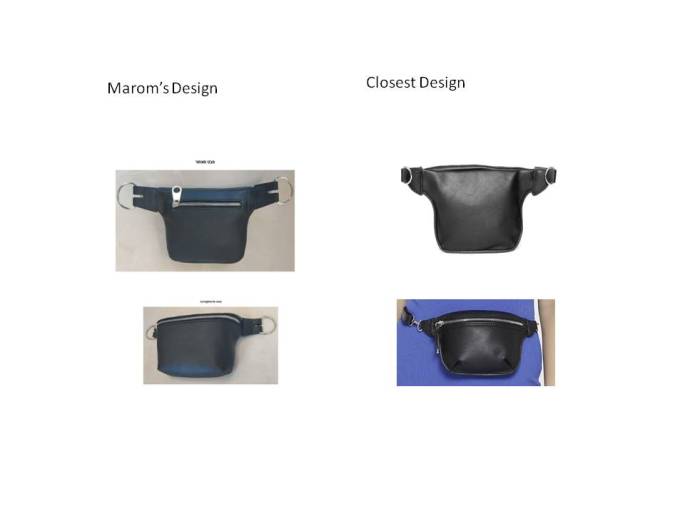
As to the Ali Express publication, the Commissioner came to a similar conclusion. The informed user will consider the applied for design is distinctive due to the ring connection between the pouch and the strap in the applied for design which is distinctive and different to the Ali Express designs where the strap is fixed to the pouch. As the product is to be worn on the waist with a belt, the belt has significance and the appearance is distinctive and different from designs with a fixed strap.
Consequently, the applied for design no. 63572 is allowed.
COMMENT
The zip on the back and the concealed pocket are not aesthetic features but rather functional features, as these are not seen when the product is worn. Nevertheless, this ruling provides guidance on the threshold for novelty and distinctiveness required for registering designs in Israel.


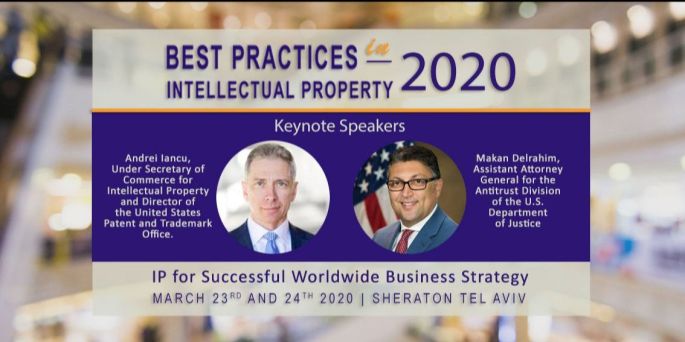

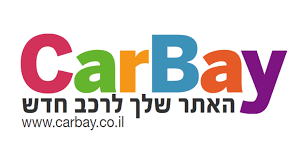 Cal Auto Financing 1998 ltd provides car leasing and rental services.
Cal Auto Financing 1998 ltd provides car leasing and rental services. Ebay, which has trademarked the word mark EBAY and stylized logos as shown opposed the registration.
Ebay, which has trademarked the word mark EBAY and stylized logos as shown opposed the registration.
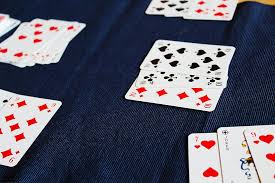 Alexander Stern of Netanya filed and prosecuted Israel Patent Application No. IL 196915 titled “Lotto Game”. He wasn’t professionally represented.
Alexander Stern of Netanya filed and prosecuted Israel Patent Application No. IL 196915 titled “Lotto Game”. He wasn’t professionally represented. Mifal Hapayis, the National Lottery, opposed the patent issuing, claiming that the invention was too general and was merely a way of playing a game that could be performed with pen and paper, and was thus not a technical invention as required for patents under Section 3 of the Law.
Mifal Hapayis, the National Lottery, opposed the patent issuing, claiming that the invention was too general and was merely a way of playing a game that could be performed with pen and paper, and was thus not a technical invention as required for patents under Section 3 of the Law.







 I have just participated in a 10 hour course on patent searching that was sponsored by Kim Lindy’s Intellectual Property Resources (IPR), and was given by Arad Ophir Ltd, Israel’s leading data resource company, that was established 25 years ago, and which provides search and information services to patent firms, universities and tech transfer companies, industrial players, and so on.
I have just participated in a 10 hour course on patent searching that was sponsored by Kim Lindy’s Intellectual Property Resources (IPR), and was given by Arad Ophir Ltd, Israel’s leading data resource company, that was established 25 years ago, and which provides search and information services to patent firms, universities and tech transfer companies, industrial players, and so on.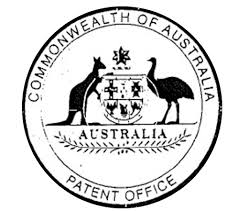 In 2001 Australia introduced an Innovation Patent. This required novelty and an innovative step, rather than an inventive step, issued after a month without examination and was valid for 8 years.
In 2001 Australia introduced an Innovation Patent. This required novelty and an innovative step, rather than an inventive step, issued after a month without examination and was valid for 8 years.